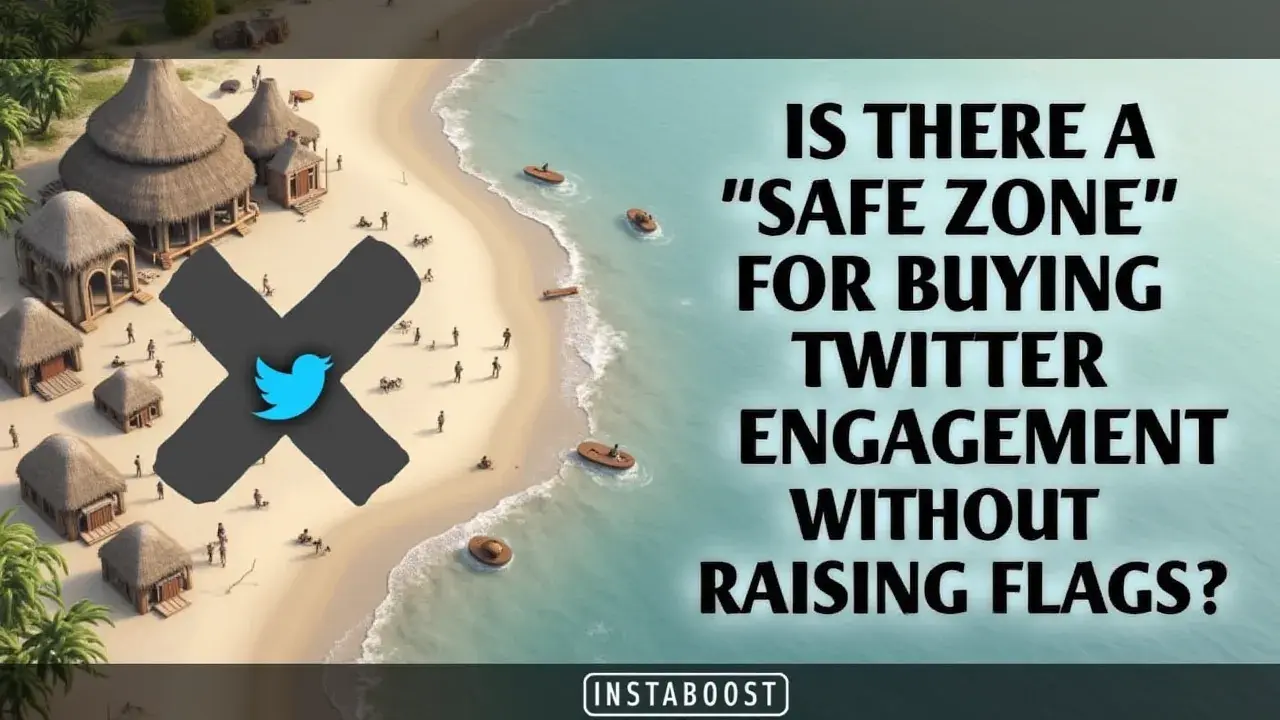Is There a Safe Zone for Buying X (Twitter) Engagement?
Buying engagement can avoid flags when activity looks organic and aligns with normal user behavior. Detection focuses on patterns like sudden spikes, low-quality accounts, repetitive actions, and mismatched audiences. Gradual pacing, credible profiles, and relevant interactions reduce scrutiny, though risks like throttling or account review remain. Keeping volumes modest and signals consistent with genuine interest is the smart path to sustain visibility without triggering detection.
The Allure and Risk of “Safe” Twitter Engagement
A lot of people, whether they work in marketing or are just everyday users, wonder if there’s a way to safely buy engagement on Twitter. It’s easy to see why. When your posts feel lost in the shuffle and growth is slow, the idea of paying for likes or retweets can seem practical, almost harmless.
But it’s worth thinking about how advanced Twitter’s algorithms have become. They’re not simply looking for obvious spam anymore. They pick up on patterns in how people act online and how accounts interact – so if your engagement suddenly spikes in a way that doesn’t fit your usual activity, it stands out. Services like INSTABOOST say they deliver real results, but it’s hard to be sure where “real” ends and suspicious begins.
People scroll through endless articles and guides about ways to get followers via X, which just underscores how common the curiosity – and the uncertainty – really is. When you see so many people searching for ways to “buy Twitter likes safely,” it’s clear that the interest is there, but so are the risks. If you’re considering it, it helps to know what kinds of behaviors trigger the system.
Numbers alone don’t tell the whole story; the platform looks for signs that match what real users do. Every paid like or retweet takes your account a little further from what feels natural, and that’s what makes detection easier. The idea of a “safe zone” is more about staying hidden, really, and there’s a lot people overlook when they try to chase that.
Numbers alone don’t tell the whole story; the platform looks for signs that match what real users do. Every paid like or retweet takes your account a little further from what feels natural, and that’s what makes detection easier. The idea of a “safe zone” is more about staying hidden, really, and there’s a lot people overlook when they try to chase that.

How Platforms Detect “Safe” Engagement
A lot of the big shifts online don’t happen where everyone’s watching. When people talk about buying Twitter engagement, what matters most is what goes on behind the scenes in the algorithms. Twitter’s detection isn’t just about catching obvious spikes in activity. It’s more about noticing subtle things – like the timing of likes and retweets, where they’re coming from, and whether the flow of responses matches what real people do. Sometimes engagement providers try to mimic that natural pattern, spreading out activity and mixing up locations so it looks real on the surface. To most people scrolling by, nothing seems off.
But all the while, the system is quietly comparing accounts and looking for things that don’t quite fit with what’s typical. Services like INSTABOOST claim their approach is “undetectable” because they use lots of different accounts and spread engagement across time zones, but even that isn’t always a sure thing. There’s also the whole issue of followers for X profiles, which tends to get bundled into these strategies whether people are chasing numbers or trying to fly under the radar. It’s not surprising that people look up phrases like “safe Twitter engagement” or “buy Twitter likes discreetly” – there’s always a concern about getting the results without drawing attention.
Still, as providers come up with new strategies to hide what they’re doing, the detection tools keep changing, too. It’s a constant back-and-forth, and if you’re trying to quietly build up your account, it’s worth paying attention to how this all works in the background, instead of just chasing whatever looks safest at the moment.
Still, as providers come up with new strategies to hide what they’re doing, the detection tools keep changing, too. It’s a constant back-and-forth, and if you’re trying to quietly build up your account, it’s worth paying attention to how this all works in the background, instead of just chasing whatever looks safest at the moment.
Charting a Discreet Course: Practical Strategies for Buying Engagement
Having a plan matters more than luck here. If you want to buy engagement on Twitter and keep things low-key, it takes a bit more thought than picking a random service and hoping for the best. What actually helps is making your activity look like what usually happens on your account – so instead of buying a ton of likes or followers all at once, you’d want to space those purchases out, and pick numbers that fit your usual pace. Twitter’s systems pay attention to anything that looks out of place, like a sudden burst of activity or likes from accounts that hardly ever post.
It also helps to keep your usual followers involved, responding and liking things, so there’s a mix of real and bought engagement. With services like INSTABOOST, you can actually buy X likes with some flexibility over timing and source, which is worth paying attention to since a little control over those details can make a big difference. These days, it’s easy to get spotted if you’re not careful – platforms are always watching for anything that doesn’t look normal. So, really, it’s about taking your time, thinking things through, and making sure everything fits in with how you already use your account. When you handle it this way, paid engagement can give your growth a nudge without setting off any alarms, and you won’t have to worry as much about things looking out of place.
Rethinking Risk: Are You Overestimating the Danger?
Buying Twitter engagement isn’t always as risky as people make it out to be. A lot of folks worry about instant bans or getting flagged, but the reality is a bit more nuanced. Twitter’s systems are good, but they aren’t foolproof – they rely on patterns and probabilities.
If someone buys engagement in small amounts, spaced out over time, and keeps it in line with what their usual activity looks like, they’re less likely to draw attention. The idea that there’s a “safe zone” isn’t just something sellers came up with; it’s more about understanding that risk comes in shades, not absolutes. There are people who buy a modest number of likes or followers and never run into problems, especially if those accounts seem real and active. Even things like safe views for tweets tend to fly under the radar when handled with care. There’s always some chance things could go wrong, of course – a bit like speeding slightly over the limit when no one’s around – but the all-or-nothing warnings you see in some guides aren’t always accurate. The key is to stay reasonable: don’t try to double your follower count overnight, don’t use services that look sketchy, and pay attention to the pacing. Even with tools like INSTABOOST, if you ignore the basics and push things too far, it’s easy to get caught. There isn’t a perfect formula, but being careful and measured goes a long way.
Redefining “Safe”: The Reality of Buying Twitter Engagement
To be honest, starting out isn’t really the hard part – it’s figuring out what you do after that. If you’re thinking about buying Twitter engagement, there isn’t some hidden trick or special number that keeps you totally in the clear. It’s always changing because Twitter updates its detection systems all the time. The way you blend those paid likes, retweets, or followers into your normal activity actually matters more than any specific setting you pick. If you act in ways that make sense with what you’d usually do, it’s less likely anyone – especially the algorithms – will notice, but there’s never a guarantee.
Twitter’s systems are always learning, and what didn’t get flagged last month might be obvious now. The best way to use paid boosts, whether it’s through INSTABOOST or another service, is to see them as something small that supports what you’re already building – real conversations, actual content, the stuff that people already care about. Sometimes it’s just a matter of wanting to buy tweet reshares X to nudge things along, but it always works best when it’s just one piece of your overall approach.
It’s kind of like adding a little bit of salt to a meal; it should bring out what’s already good, not cover everything up. If engagement buying is only one part of what you’re doing – not the whole plan – you’re less likely to run into trouble. The point is to help your account pick up a bit of steam, not to throw a spotlight on the fact that you’re paying for attention. If you keep things balanced, pay attention to how things are changing, and don’t rely on shortcuts, you’re less likely to run into problems, but you can’t count on being totally invisible, either. This kind of thing always sits somewhere in between – it depends a lot on how you handle it, really, and that line can shift without much warning.















